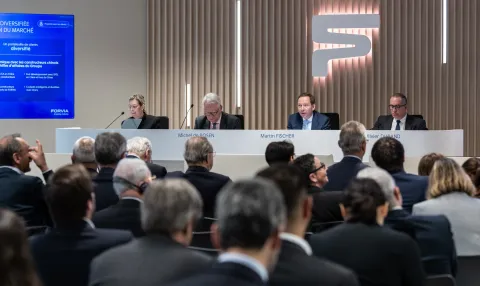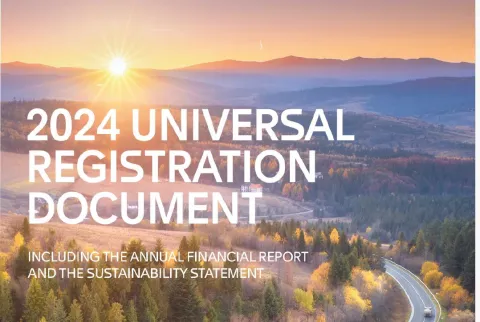
The Automotive Shift we need to talk about: Local Content

The transformation of the automotive industry goes far beyond electrification or China dynamism. A quieter but equally structural shift is underway: the regionalization of value chains. In this column, I address a key issue for the future of the European automotive ecosystem: strengthening local content rules to safeguard know-how, support jobs, and ensure a more resilient transition. But this strategy will only be effective if all players — policymakers, OEMs, social partners — engage with it in a coordinated and ambitious way.

Tribune by Victoria CHANIAL - Executive Vice President, Group Communications, Public Affairs and Sustainability
It is often said that the automotive industry is undergoing the most transformative period in its history. Powertrain electrification, the emergence of new OEMs, the shift of production to China, and the declining competitiveness of historically dominant regions like the EU and NAO are all both causes and consequences of the forces reshaping the sector.
While new CO₂ regulations driving electrification are frequently highlighted as the primary catalyst, another equally critical paradigm shift is gaining momentum: the regionalization of the automotive economy.
Since the early 1980s, globalization has been regarded as the most effective system for optimizing production costs across industries, while also supporting economic development in emerging markets.

This model enabled northern economies to expand middle-class consumption and southern economies to build one. However, this logic was abruptly challenged by the COVID-19 pandemic, which exposed the fragility of highly interconnected supply chains.
A small disruption in one region can ripple across the globe, halting production or consumption thousands of kilometers away.
This sparked renewed discussions around industrial resilience, supply chain dependencies, reshoring, and the protection of local industries.
At the same time, global trade policy has entered a new era. The post-WWII consensus around free and fair trade, embodied by institutions like the WTO, is being questioned as to whether it is still fit for purpose.
Today, many regions are implementing protectionist measures to ensure “fair” competition and shield domestic players from new entrants who may not follow the same rules. The recent escalation of tariffs between the U.S., Europe, and China—the world’s largest economic blocs—is a clear manifestation of this shift. The automotive industry is directly impacted by this new paradigm.
A new paradigm implying smart protectionism
In this context, the idea of promoting greater use of locally sourced content in vehicles has recently gained momentum in the EU debate — an initiative that we at FORVIA advocate to support the resilience of suppliers’ industrial capabilities, know-how and workforce and ensure fair competition in a changing global landscape.
While internal combustion engine (ICE) vehicles in Europe typically contain around 90% locally sourced components, this figure drops to just 40–60% for battery electric vehicles (BEVs), largely due to imported batteries, which account for a significant share of a BEV’s value.
With electrification accelerating, retaining value creation within Europe is critical. Local content rules should apply across all components (not only for batteries as the EU has indicated so far) to support the broader supplier base.

Protecting the European auto industry means protecting its entire ecosystem — not only OEMs, but also the vast network of suppliers that support them. The sector represents 8% of Europe’s GDP and 13 million jobs.
While tier 1 suppliers like FORVIA operate globally and can mitigate risks across regions, thousands of tier 2 and 3 suppliers remain highly exposed.
If we want to avoid reducing Europe to a final assembly hub — a “screwdriver” industry — we must protect the supplier base.
Today, OEMs benefit from tariff barriers of up to 48% on some imported BEVs, while component tariffs remain negligible (barely 3%). This imbalance highlights the urgency of implementing new mechanisms of smart protectionism.
Apply what others already do
What we are proposing is not unprecedented. Similar frameworks are already in place across key automotive regions like India, China, and the USMCA zone (U.S., Mexico, Canada).
We should draw inspiration from these models in terms of methodology and applications rules. In the USMCA, for example, local content criteria go beyond origin requirements to include labor cost thresholds, ensuring that components are not only produced locally but also attached to social standards. While it is easier to align three countries than 27, the EU must explore this path.
The same logic applies to sustainability. Locally produced parts are better for the environment — at FORVIA, goods transportation alone accounts for 6% of our emissions. Local content rules can accelerate decarbonization, provided they are applied consistently across all EU member states.

Our industry must play collective
Ideas are easy to express; building consensus across diverse stakeholders is far more complex.
This is where we stand with “local content.” Priorities may differ between countries, OEMs, and suppliers — but the automotive industry has always operated as an ecosystem. Value must be shared fairly across all players and all regions within the biggest economical market of the world.
And beyond protection, we must also stimulate demand. Several levers remain underused — from corporate fleet incentives to public subsidies and targeted tax benefits for locally produced vehicles.
All of these must work together to create a new momentum and give a future to our industry in EU.
It is now time to move from discussion to action. Other regions are moving fast, and Europe must not fall behind. As a global player, FORVIA already sees local approaches as the new standard for success.
This “glocal” mindset is not a retreat from global trade, but a necessary evolution — one that fosters prosperity, fairness, and sustainability in the European automotive industry.
Victoria CHANIAL



